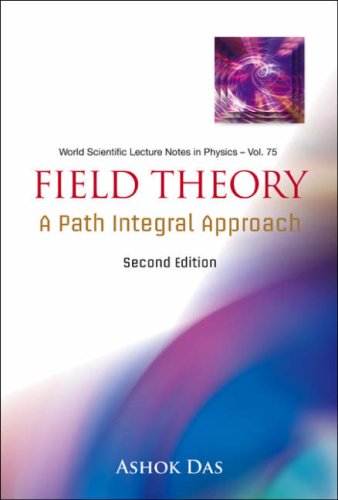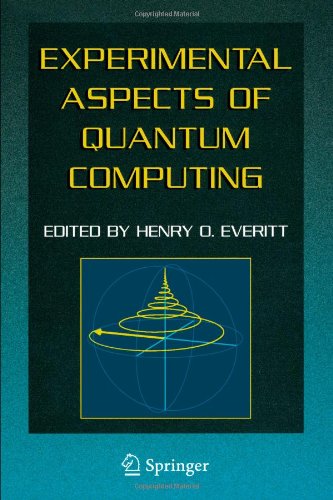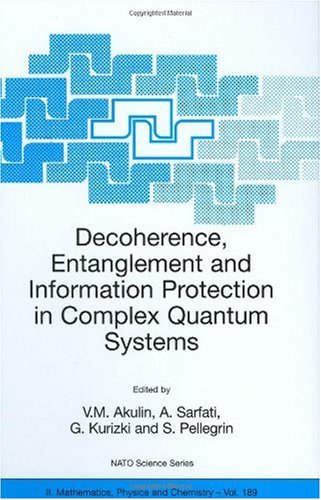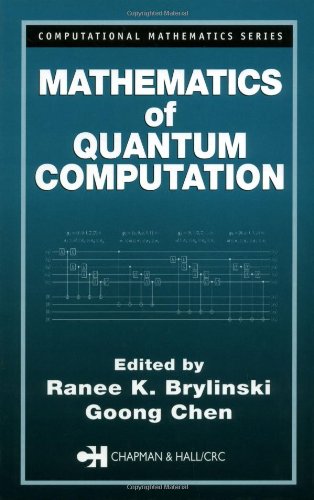Ashok Das9812568476, 9789812568472, 9812568484, 9789812568489
Table of contents :
Contents……Page 12
Preface to the First Edition……Page 8
Preface to the Second Edition……Page 10
1.1 Particles and Fields……Page 16
1.2 Metric and Other Notations……Page 17
1.3 Functionals……Page 18
1.4 Review of Quantum Mechanics……Page 22
1.5 References……Page 25
2.1 Basis States……Page 26
2.2 Operator Ordering……Page 28
2.3 The Classical Limit……Page 35
2.4 Equivalence with the Schrodinger Equation……Page 37
2.5 Free Particle……Page 40
2.6 References……Page 45
3.1 Path Integral for the Harmonic Oscillator……Page 46
3.2 Method of Fourier Transform……Page 48
3.3 Matrix Method……Page 51
3.4 The Classical Action……Page 60
3.5 References……Page 66
4.1 Euclidean Rotation……Page 68
4.2 Time Ordered Correlation Functions……Page 74
4.3 Correlation Functions in Definite States……Page 76
4.4 Vacuum Functional……Page 79
4.5 Anharmonic Oscillator……Page 86
4.6 References……Page 88
5.1 Fermionic Oscillator……Page 90
5.2 Grassmann Variables……Page 93
5.3 Generating Functional……Page 98
5.4 Feynman Propagator……Page 101
5.5 The Fermion Determinant……Page 106
5.6 References……Page 110
6.1 Supersymmetric Oscillator……Page 112
6.2 Supersymmetric Quantum Mechanics……Page 117
6.3 Shape Invariance……Page 120
6.4 Example……Page 125
6.5 Supersymmetry and Singular Potentials……Page 126
6.6 References……Page 133
7.1 WKB Approximation……Page 136
7.2 Saddle Point Method……Page 142
7.3 Semi-Classical Methods in Path Integrals……Page 145
7.4 Double Well Potential……Page 149
7.5 References……Page 157
8.1 Instantons……Page 158
8.2 Zero Modes……Page 165
8.3 The Instanton Integral……Page 169
8.4 Evaluating the Determinant……Page 173
8.5 Multi-Instanton Contributions……Page 178
8.6 References……Page 181
9.1 Systems with Many Degrees of Freedom……Page 182
9.2 Relativistic Scalar Field Theory……Page 185
9.3 Feynman Rules……Page 196
9.4 Connected Diagrams……Page 199
9.5 References……Page 201
10.1 The Classical Field……Page 202
10.2 Effective Action……Page 208
10.3 Loop Expansion……Page 215
10.4 Effective Potential at One Loop……Page 218
10.5 References……Page 223
11.1 Symmetries of the Action……Page 224
11.2 Noether’s Theorem……Page 227
11.3 Complex Scalar Field……Page 233
11.4 Ward Identities……Page 237
11.5 Spontaneous Symmetry Breaking……Page 241
11.6 Goldstone Theorem……Page 250
11.7 References……Page 251
12.1 Maxwell Theory……Page 254
12.2 Non-Abelian Gauge Theory……Page 261
12.3 Path Integral for Gauge Theories……Page 270
12.4 BRST Invariance……Page 281
12.5 Ward Identities……Page 289
12.6 References……Page 293
13.1 Anomalous Ward Identity……Page 294
13.2 Schwinger Model……Page 304
13.3 References……Page 322
14.1 Statistical Mechanics……Page 324
14.2 Critical Exponents……Page 329
14.3 Harmonic Oscillator……Page 333
14.4 Fermionic Oscillator……Page 339
14.5 References……Page 341
15.1 One Dimensional Ising Model……Page 342
15.2 The Partition Function……Page 347
15.3 Two Dimensional Ising Model……Page 352
15.4 Duality……Page 354
15.5 High and Low Temperature Expansions……Page 358
15.6 Quantum Mechanical Model……Page 364
15.7 Duality in the Quantum System……Page 371
15.8 References……Page 373
Index……Page 374







Reviews
There are no reviews yet.